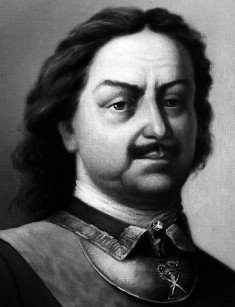биография петра 1 на английском
Тема / Топик по английскому языку:
Peter the Great
Peter I, or Peter the Great, was one of the most outstanding rulers and reformers in Russian history. He was Tsar of Russia and became Emperor in 1721. First he ruled together with his brother, Ivan, and his sister, Sofya. In 1696 he became a sole ruler.
He was a healthy, lively and clever child. He loved military games and enjoyed carpentry, blacksmithing and printing. At the age of l7 he was married.
Peter I is famous for drawing Russia further to the East. He also transferred the capital from Moscow to St. Petersburg. Peter travelled much in Western Europe and tried to carry western customs and habits to Russia. He introduced western technology. He completely changed the Russian government and military system: he increased the power of the monarch and reduced the power of the boyars and the church.
In foreign policy, Peter I waged a war with Turkey (1695-1696) and the Great Nothern War with Sweden (1700-1721), and a war with Persia (1722-1723). In these wars, he wanted to get access to the Baltic, the Black Sea and the Caspian Sea. He managed to get the shores of the Baltic Sea and the Caspian Sea.
Peter I played a great part in Russian history. After his death, Russia was much more secure and progressive than it had been before his reign.
Topical Vocabulary
Биография Петра I на английском языке
Здесь вы можете прочитать биографию Петра I на английском языке.

In 1676 Tsar Alexis I died. As a result the power was left to Feodor III who was Peter’s elder half-brother. He died in 1682 and there were not his descendants. Consequently there was a conflict for power between the Miloslavsky and Naryshkin families. Other half-brother of Peter, Ivan V, was heir to the throne but his health declined. As a result at the age of ten Peter became Tsar chosen by the Boyar Duma.
Peter was interested in shipping and shipbuilding. He was a tall man and his height was about 200 cm. He did not have square shoulders and his feet and hands were small. Moreover Peter’s head was small for his figure. In accordance with his mother’s desire Peter married. The marriage was in 1689 and Eudoxia Lopukhina became his wife. 10 years later the marriage broke down and Peter’s wife became a nun.
In 1689 the power was in the hands of Peter’s half-sister Sophia. Because of two ineffective Crimean campaigns her authority was undermined and Peter planned to take power. Peter could become an independent ruler only in 1694 when his mother died. Officially there were two rulers: Peter and Ivan V. In 1696 Peter became the absolute ruler when Ivan V died.
On 19 August 1700 Peter declared war on Sweden. The main aim of the war was to acquire control of the Baltic Sea. At that time it was under Swedish Empire control. Denmark-Norway, Saxony and the Polish-Lithuanian Commonwealth supported Peter. In 1721 the Treaty of Nystad ended and the Russian Empire acquired control of the Baltic Sea. This war went down in history as Great Northern War.
In October 1721 Peter was proclaimed Emperor of All Russia. Augustus II of Poland, Frederick William I of Prussia, and Frederick I of Sweden recognized this title. Other monarchs did not agree with it. Some rulers were afraid that Peter would claim authority over them.
Peter imposed new taxes in the Russian Empire. The household tax and the land tax were abrogated. These two taxes were superseded with a poll tax. He also reformed the Russian Orthodox Church.
In 1724 Peter married for a second time to Catherine who was crowned as Empress. However he remained actual ruler of Russia. Peter had 2 wives and 14 children by them. Only 3 of his children survived to adulthood.
In 1723 Peter’s health declined. He had problems with bladder and urinary tract but he was cured. As legend has it in November 1724 while at Lakhta Peter was forced to rescue the soldiers drowning not far from shore.
Consequently his health became worse and these problems caused his death. Peter died on 8 February 1725.
Peter I
Peter I: biography
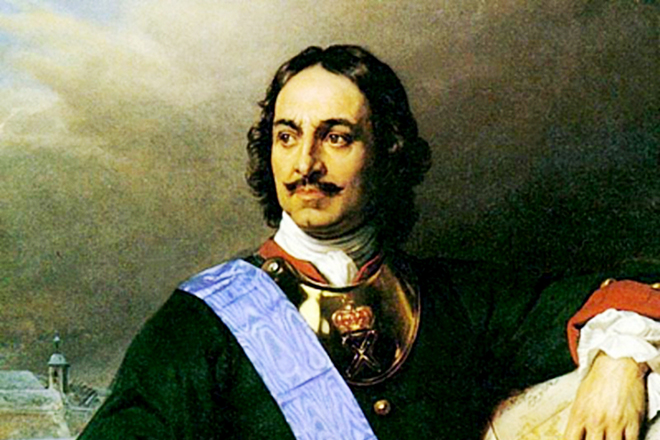
For Russia, the reign of Peter the Great was the time of large-scale reforms. He significantly expanded the territory of the country, built a beautiful city St. Petersburg, raised the economy, founded a network of metallurgical and glass factories, and also reduced the import of foreign goods to a minimum. In addition, Peter the Great was the first Russian ruler who adopted best ideas from Western countries. But all the reforms of Peter the Great were achieved due to violence against the population and the eradication of all dissent. Peter 1 still causes different opinions among historians.
Childhood and youth of Peter I
Biography of Peter I from the beginning meant his future reign, since he was born to the family of Tsar Alexei Mikhailovich Romanov and his wife Natalia Kirillovna Naryshkina. It is noteworthy that Peter the First was the 14th child of his father, but the first-born for his mother. Also it is worth noting that the name Peter was not traditional for both dynasties of his ancestors, so historians still cannot figure out why he got such a name.

The boy was only four years old when his father died. His elder brother and godfather, Fedor III Alekseevich, took the throne. He became a guardian of his brother and ordered to give him the best possible education. However, Peter the Great had big problems with education. He was always very curious, but just at that moment the Orthodox Church started a war against foreign influence and all Latin teachers were banished. Therefore, the boy was taught by Russian clerks, who did not have deep knowledge, and there were no Russian-language books of the proper level. As a result, Peter the First had a lean vocabulary and until the end of his life he was writing with mistakes.

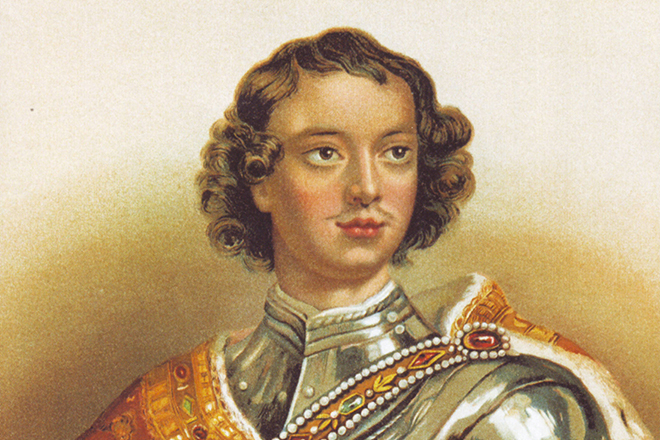
Peter’s favorite game was lessons with his army. And the soldiers of the prince were not toys. His peers dressed in uniform and marched through the streets of the city, while Peter the Great was a drummer in his regiment. Later, he even started his own artillery, also real. The comic army of Peter I was called the Preobrazhensky regiment, to which the Semenov regiment was later added. Besides them, the Tsar organized a comic fleet.
Tsar Peter I
When the young king was still a child, the elder sister, Princess Sophia, stood behind him as well as his mother Natalia Kirillovna and her relatives Naryshkins. In 1689, his brother Ivan V finally gave Peter all power, although he was nominally a co-king until he suddenly died at the age of 30. After the death of his mother, Tsar Peter the Great cancelled the guardianship of the Naryshkins and from that time we can speak of Peter the First as an independent ruler.
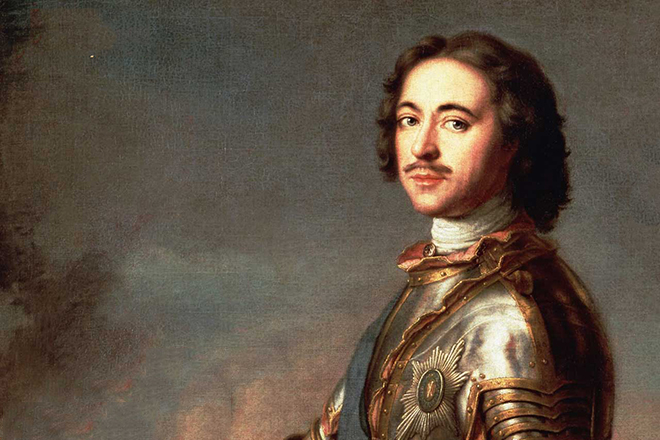
He continued military operations in the Crimea against the Ottoman Empire, made a series of Azov campaigns, which resulted in the capture of the fortress of Azov. To strengthen the southern borders, the king built the port of Taganrog, but Russia still did not have a good fleet. So the final victory was not achieved. Building of ships and training of young noblemen abroad began. And the king learned the art of building a fleet. He even worked as a carpenter during the construction of the ship «Peter and Paul.»
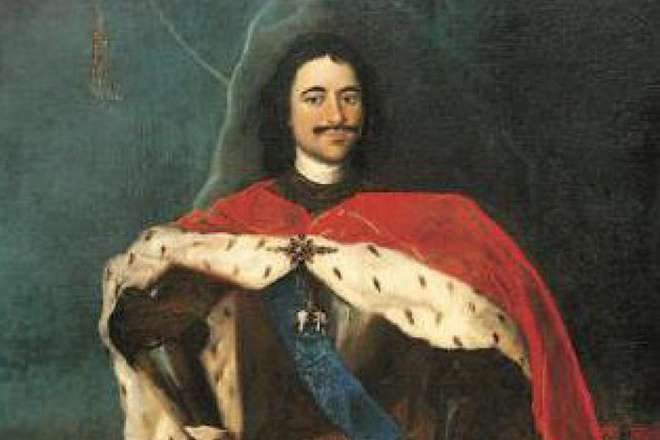
While Peter the Great was preparing to make reforms in the country and studied the technical and economic progress of the leading European countries, against him a conspiracy was created. And at the head was the first wife of the king. After suppressing the Streltsy rebellion, Peter the First decided to reorient military operations. He signs a peace agreement with the Ottoman Empire and begins a war against Sweden. His troops captured the Noteburg Nienschanz fortress at the Neva delta, where the king decided to found the city St. Petersburg. And put the Russian naval base on the Kronstadt Island.
The Wars of Peter the Great
These conquests allowed him to open the way to the Baltic Sea, which later received the symbolic name «Window to Europe». Later Eastern Baltic joined to Russia and in 1709 at the legendary Poltava Battle the Swedes were defeated completely. And it is important to note: Peter the First unlike many kings did not sit out in fortresses, but personally was in the head of the troops on the battlefield. In the Poltava Battle, his hat was shot, so he really risked his own life.

After the defeat of the Swedes near Poltava, King Charles XII took refuge under the protection of the Turks in Bendery, which was the part of the Ottoman Empire, and today is located in Moldova. With the help of the Crimean Tatars and the Zaporozhye Cossacks, he tried to change the situation on the southern border of Russia. Trying to deport Charles, Peter the First, on the contrary, forced the Ottoman Sultan to begin the Russian-Turkish war. Russia was in a situation when it was necessary to wage war on three fronts. On the border with Moldova the king was surrounded and agreed to sign peace with the Turks, giving them back the Azov fortress and access to the Azov Sea.
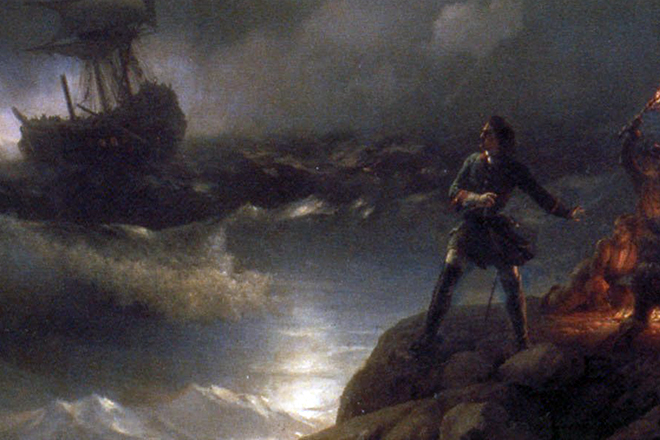
In addition to the Russian-Turkish and northern wars, Peter the Great went to the east. Thanks to his expeditions, Omsk, Ust-Kamenogorsk and Semipalatinsk were founded, later Kamchatka joined Russia. The king wanted to make campaigns to North America and India, but failed to realize these ideas. But he made the so-called Caspian campaign against Persia, during which he conquered Baku, Resht, Astrabad, Derbent, as well as other Iranian and Caucasian fortresses. But after the death of Peter the Great, most of these territories were lost, as the new government considered the region not promising, and paying to the garrison in those conditions was too expansive.
Reforms of Peter I
Due to the fact that the territory of Russia was expanded considerably, Peter managed to reorganize the country from the kingdom into the empire, and since 1721 Peter I became the emperor. Such reform of Peter I as the changes in the army helped him to achieve great military victories. But no less important were such innovations as the transition of the church under the subordination of the emperor, as well as the development of industry and trading. Emperor Peter the Great understood that the country needed education and wanted change the outdated way of life. On the one hand, his tax on wearing a beard was considered as tyranny, but at the same time the career of nobleman depended on their level of education.

The first Russian newspaper was founded thanks to Peter and many translations of foreign books appeared. Artillery, engineering, medical, marine and mountain schools were opened, as well as the first gymnasium in the country. And now, general education schools could be visited not only by the children of noble men, but also by the children of soldiers. He really wanted to create a compulsory primary school, but he did not manage to carry out this plan. It is important to note that the reforms of Peter the Great affected not only the economy and politics. He financed the education of talented artists, introduced a new Julian calendar, and tried to change the position of women by prohibiting forced marriages. He also raised the dignity of his people, obliging them not to kneel even before the king and use full names, rather than calling themselves «Senka» or «Ivashka» like before.

In general, the reforms of Peter the Great changed the values of the nobility, which can be considered a huge advantage, but the gap between the nobility and the people has increased many times and it was not limited only by finance and title. The main disadvantage of Peter’s transformations is considered the violent method he used. In fact, it was a struggle of despotism with uneducated people, and Peter hoped to awake awareness in people. The construction of St. Petersburg was made in difficult conditions. Many craftsmen gave up their work, and the king imprisoned their families, until men returned.

Not everyone liked the method of Peter’s the Great governing. The tsar founded Transfiguration order, the organization of political investigation and the court, which later grew into the infamous Secret Chancellery. The most unpopular decrees in this context were a ban on writing in a closed room, as well as a ban on non-denunciation. The violation of both these decrees was punishable by death. In this way, Peter the Great struggled with conspiracies and palace coups.
Personal life
In his youth, Tsar Peter I liked to visit the German settlement, where he not only became interested in foreign life, for example, he learned to dance, smoke and communicate in a Western manner, but also fell in love with the German girl Anna Mons. His mother was very worried about this relationship, so when Peter reached the age of 17, she insisted on his wedding with Evdokia Lopukhina. However, they did not have a normal family life: shortly after the wedding, Peter left his wife and visited her only to prevent rumors of a certain kind.
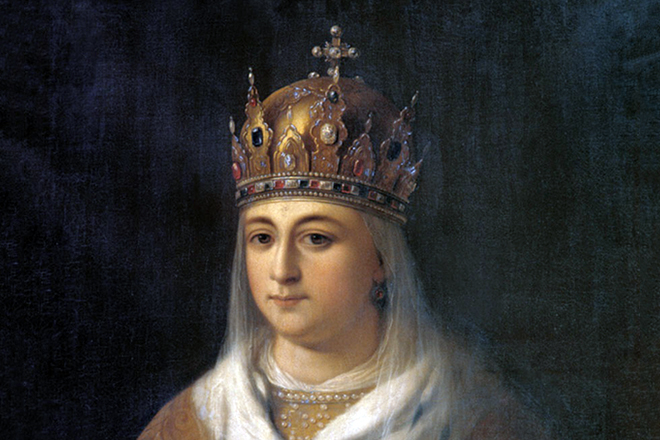
Tsar Peter I and his wife had three sons: Alexei, Alexander and Pavel, but the last two died in infancy. The eldest son of Peter the Great was supposed to become his heir, but since Evdokia in 1698 unsuccessfully tried to overthrow her husband from the throne in order to transfer the crown to her son and was imprisoned in a monastery, Alexei was forced to go abroad. He never approved the reforms of his father; he thought he is a tyrant and planned to overthrow the parent. However, in 1717, a young man was arrested and taken into custody in the Peter and Paul Fortress, and the next summer he was sentenced to death. Before the execution, it did not happen, because soon Alexei died in prison under unclear circumstances.
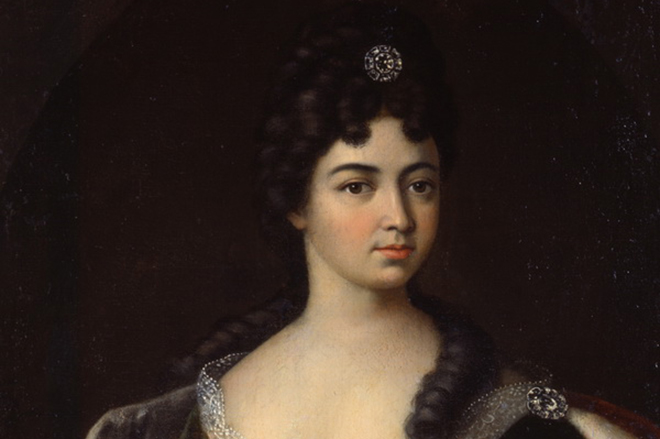
Despite the fact that his wife accompanied the emperor in all campaigns, he fell in love with the young Maria Cantemir, the daughter of the former Moldovan ruler, Prince Dmitry Konstantinovich. Maria remained the favorite of Peter the Great until the end of his life. It is worth mentioning the height of Peter I. Even for our contemporaries, more than two-meter-tall man seems very high. But in the time of Peter I his 203 centimeters seemed completely improbable. According to the chronicles, when the Tsar and Emperor Peter the Great walked through the crowd, his head was above people.
Death of Peter I
Compared with his elder brothers Peter the First seemed quite healthy. But in fact, almost all his life he had terrible headaches, and in the last years of the reign Peter I suffered from kidney stone disease. The attacks were intensified after the emperor, together with ordinary soldiers, pulled out the boat, but he tried not to pay attention to the disease.
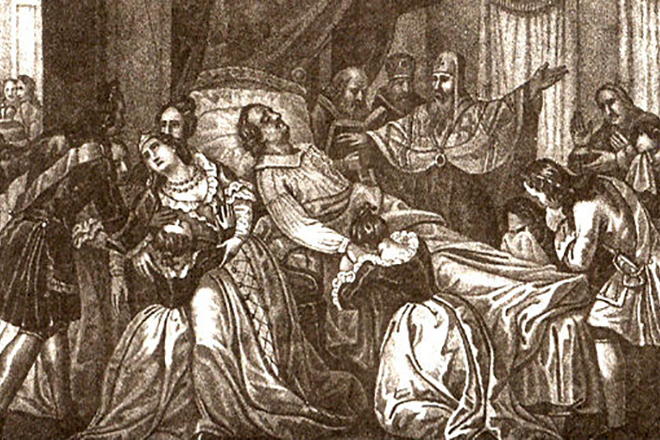
At the end of January, 1725, the ruler could no longer bear the pain and lived in his Winter Palace. After he couldn’t even to scream, but only groaned, people realized that Peter the First was dying. Peter the Great died in terrible agony. The official cause of his death, doctors called pneumonia, but later the doctors had strong doubts about this verdict. The autopsy showed a terrible inflammation of the bladder, which had already developed into gangrene. Peter the Great is buried in the cathedral at the Peter and Paul Fortress in St. Petersburg, and the heir of the throne was his wife, Empress Catherine I.
Peter I, or Peter the Great (1672-1725), was one of the most outstanding rulers and reformers in Russian history. He was at first a joint ruler with his weak and sickly half-brother, Ivan V, and his sister, Sophia. In 1696 he became a sole ruler. Peter I was Tsar of Russia and became Emperor in 1721. As a child, he loved military games and enjoyed carpentry, blacksmithing and printing. He was first married at the age of 17.
Peter I is famous for carrying out a policy of ‘westernization’ and drawing Russia further to the East that transformed Russia into a major European power. Having travelled much in Western Europe, Peter tried to carry western customs and habits to Russia. He introduced western technology and completely changed the Russian government, increasing the power of the monarch and reducing the power of the boyars and the church. He reorganized Russian army along Western lines.
He also transferred the capital to St. Petersburg, building the new capital to the pattern o/European cities.
In foreign policy, Peter dreamt of making Russia a maritime power. To get access to the Black Sea, the Caspian Sea, the Azov Sea and the Baltic, he waged wars with the Ottoman Empire (1695—1696), the Great Northern War with Sweden (1700-1721), and a war with Persia (1722-1723). He managed to get the shores of the Baltic and the Caspian Sea.
In his day, Peter I was regarded as a strong and brutal ruler. He faced much opposition to his reforms, but suppressed any and all rebellion against his power. The rebellion of streltsy, the old Russian army, took place in 1698 and was headed by his half-sister Sophia. The greatest civilian uprising of Peter’s reign, the Bulavin Rebellion (1707—1709) started as a Cossack war. Both rebellions aimed at overthrowing Peter and were followed by repressions.
Peter I played a great part in Russian history. After his death, Russia was much more secure and progressive than it had been before his reign.
Translate the following sentences into English.
1. Петр Великий был одним из выдающихся правителей и реформаторов в русской истории, который сначала правил совместно со своим сводным братом и сестрой Софьей, затем стал править самостоятельно, а позже стал императором России.
2. Петр I осуществлял политику «вестернизации», пытался продвинуть Россию дальше на Восток и ввел западную технику.
3. Он превратил Россию в ведущую европейскую державу и попытался перенести европейские обычаи и образ жизни в Россию.
4. Петр I усилил власть монарха, ослабил власть бояр и церкви и реорганизовал русскую армию по западному образцу.
5. Он мечтал превратить Россию в морскую державу и вел войны с Оттоманской империей, Швецией и Персией.
6. Он столкнулся с сильной оппозицией своим реформам, но подавлял любые восстания против своей власти, и в свое время считался сильным и жестоким правителем.
7. За крупнейшим гражданским восстанием во время правления Петра последовали репрессии.
1. Peter the Great was one of the outstanding rulers and reformers in Russian history, who first was a joint ruler with his half-brother Ivan V and his sister Sophia, then became a sole ruler, and later Emperor of Russia.
2. Peter I carried out a policy of’ westernization’, tried to draw Russia further to the East and introduced western technology.
3. He transformed Russia into a major European power and tried to carry western customs and habits to Russia.
4. Peter I increased the power of the monarch, reduced the power of the boyars and the church and reorganized Russian army along the Western lines.
5. He dreamt of making Russia a maritime power and waged wars with the Ottoman empire, Sweden and Persia.
6. He faced much opposition to his reforms, but suppressed any and all rebellion against his power, and he was regarded in his day as a strong and brutal ruler.
7. The greatest civilian uprising of Peter’s reign was followed by repressions.
Краткая биография Петра 1 на английском языке с переводом
Ответ:
1. Вставьте глагол to be в форме Рresent Simple.
1. Mike is a student. Не is a good student.
3. His father is not a teacher.
5. Her sister is an engineer. She is at work.
6. Helen is not a talented student. She is a schoolboy. She is at school now.
7. Helen is a painter. She has some fine pictures. They are on the wall.
9. These are his newspapers.
10. My uncle is an office worker.
12. Alice has a brother. Hes brother is 30. She is a worker. She is at home.
2. Образуйте отрицательную форму предложений.
1. Не doesn’t visit his grandparents very often.
2. We don’t live in Old Britain.
3. Mike and John don’t go to school by bus.
4. Our sister doesn’t live in this house.
5. Helen doesn’t want to be a doctor.
6. I don’t play tennis every Sunday.
7. They don’t work in the garden every day.
8. Their brother doesn’t go to bed at nine.
9. Usually we don’t have dinner very late.
10. My brothers don’t watch TV every evening.
2. Образуйте вопросительную форму предложений.
1. Does hе visit his grandparents very often?
